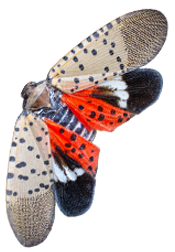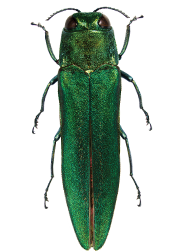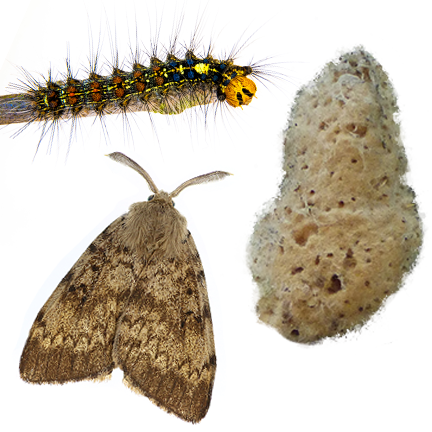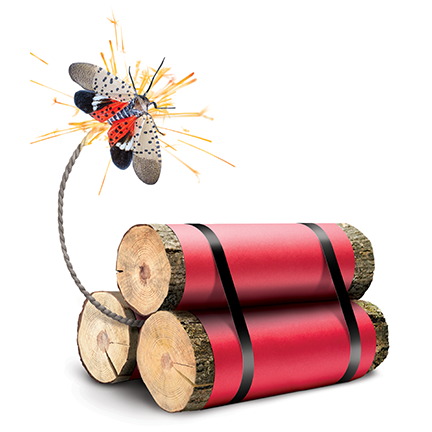Stop the spread and help keep invasive species out of Canada
Pests can travel when we do. Think of them as Canada's worst hitchhikers – they use our vehicles, trailers, soil, dirty footwear, furniture, camping equipment and more to spread from one region to another.
Before you go somewhere, check for insect larvae, eggs, and adults like beetles, moths and others.
Contact the CFIA if you find a pest in an area where it is not known to occur.
What you can do
Before you go somewhere, check for insect larvae, eggs, and adults like beetles, moths. Remember to:
- Clean your:
- shoes
- tarps
- RVs, camper vans or trailers
- gardening equipment
- other outdoor materials before travelling in and out of regulated areas
- Inspect and report sightings in Canada on vehicles, ships/boats, cargo and containers
Other things you can do:
- Check the trees and gardens on your property
- The tree check form (from the Invasive Species Centre) provides a simple guide for what to look for
- Learn more about invasive species and how to identify them.
- Don't move firewood. Buy local, burn local, and learn the hazards and rules of moving firewood
- Join the plant health movement
Pests to look out for

The spotted lanternfly can destroy entire fruit crops very quickly, posing a huge threat to Canada's grape (wine), fruit tree and forestry industries. It is present in the United States near the Canadian border and spreading. Let's keep it out of Canada. It is not known to exist in Canada but was added to the regulated pest list in 2018 in an effort to prevent its introduction from infested areas in the United States and elsewhere.
What to do if you spot it: Snap, catch, and report it.

The emerald ash borer (EAB) has spread to parts of 5 provinces (New Brunswick, Nova Scotia, Quebec, Ontario and Manitoba) and has killed millions of ash trees across North America since being detected in July 2002. Firewood is the fastest way it spreads.
What to do if you spot it: Report it if you see it outside any of the 5 provinces listed, by contacting the CFIA online.

The spongy moth (Lymantria dispar dispar) is established in many areas east of the Manitoba–Ontario border. If you find it outside these regulated areas, including in Newfoundland and Labrador or in western Canada, report it by contacting the CFIA online. This pest could be a serious threat to Canada's economy. Look for this leaf-eating pest's eggs on firewood, vehicles, brick and items stored outdoors. Scrape off eggs and insects, soak them in hot soapy water, then scrap them in a zipped bag in the garbage.
What to do if you spot it: Destroy it – spot, scrape, soak
How invasive species threaten Canada
As worldwide trade and travel increase, the risk of spreading invasive species rises, potentially resulting in infestation which can harm or kill parts of our forests, agriculture and environment. Pests are often quick to adapt and spread, and usually don't have any natural predators in a new environment.
If pests do spread, they can:
- destroy trees in our forests, affecting our air and water quality and our economy
- invasive pests are already responsible for billions of dollars in damage to Canada's trees
- damage crops and reduce yield
- deprive animals of their natural habitat
- damage gardens and private property
What the CFIA is doing about invasive species
As Canada's national plant protection organization, the CFIA
- prevents the introduction of invasive species through import regulations
- regulates the movement of invasive species within Canada
- monitors invasive species that are not yet found in Canada
- determines if an invasive species is now established
More information
- Awareness resources for invasive species
- Fact sheets and plant pest cards to promote public awareness and encourage reporting of invasive species, some of which are regulated under the Plant Protection Act
- List of pests regulated by Canada
- What you can do: Protecting Canada's plant health
- An invasive alien species strategy for Canada
- Learn about aquatic invasive species (Fisheries and Oceans Canada)
Check with your provincial or territorial government, since invasive species may also be regulated by provincial or territorial authorities.
- Date modified:
